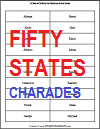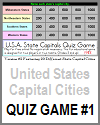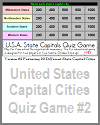Games can be highly effective in helping K-12 students learn about the geography of the United States, making the learning process engaging, interactive, and memorable. Educational games that focus on U.S. geography often incorporate elements of fun and competition, which can motivate students to actively participate and retain information better.
Interactive map games, for example, can help students identify states, capitals, and major landmarks by providing instant feedback and rewards for correct answers. This hands-on approach reinforces spatial awareness and memory retention. Additionally, puzzle games that require students to piece together maps of the United States can improve their understanding of state locations and borders.
Role-playing and simulation games can immerse students in historical and cultural contexts, helping them understand the geographical factors that influenced significant events and migration patterns. These games encourage critical thinking and contextual learning, as students explore how geography affects various aspects of life.
Collaborative games promote teamwork and communication, as students work together to solve geographical challenges or complete quests that require knowledge of U.S. geography. These activities can also foster a sense of curiosity and exploration, prompting students to learn more about different regions, climates, and cultures within the United States.
Overall, incorporating games into geography education enhances engagement, reinforces knowledge, and develops essential skills, making the subject more accessible and enjoyable for K-12 students.
|










